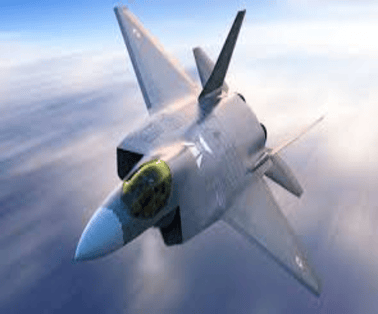The Cabinet Committee on Security (CCS) has approved a monumental Rs 15,000 crore project for the design and development of the AMCA fighter jet, marking a major milestone in India’s quest for an indigenous fifth-generation fighter aircraft. This ambitious project will place India among the select few nations capable of producing advanced stealth fighter jets.
Key Highlights of AMCA Fighter Jet
- Fifth-generation (5G) fighters are aircraft capable of operating in heavily contested combat zones, characterised by the presence of the most advanced air and ground threats, both current and anticipated.
- 5G fighter jets have stealth capabilities and can cruise at supersonic speeds without engaging afterburners.
- The Aeronautical Development Agency (ADA) under the Defence Research and Development Organisation (DRDO) will be the nodal agency for executing the programme and designing the aircraft.
- It will be manufactured by state-owned Hindustan Aeronautics Limited (HAL).
- The aircraft will put India in a select group of nations that have their own fifth-generation fighter aircraft.
- Only a few countries have built a fifth-generation stealth fighter aircraft. The list of the aircraft currently in service includes the F-22 Raptor and F-35A Lightning II of the US, the Chinese J-20 Mighty Dragon, and the Russian Sukhoi Su-57.
Features of AMCA : India’s Fifth-Generation Fighter
- The 25-tonne twin-engine aircraft, which will be bigger than other fighters in the Indian Air Force inventory, will have advanced stealth features to avoid detection by enemy radar.
- The aircraft will have a large, concealed internal fuel tank of 6.5-tonne capacity, and an internal weapons bay for a range of weapons, including indigenous weapons, to be buried in its belly.
- The AMCA Mk1 variant will have the US-built GE414 engine of the 90 kilonewton (kN) class, while the more advanced AMCA Mk2 will fly on the more powerful 110kN engine, which will be developed indigenously by DRDO’s Gas Turbine Research Establishment (GTRE) in collaboration with a foreign defence major.
- Other features such as a diverterless supersonic inlet for controlling air flow into the engines, and a serpentine air intake duct to shield the engines from radar emissions, are likely to be part of the AMCA.
Background
- Discussions for developing the AMCA started in 2007.
- The initial plan was to jointly develop the aircraft with Russia under a Fifth Generation Fighter Aircraft (FGFA) programme. However, India withdrew from the FGFA project in 2018.
- The AMCA will be India’s indigenous fifth-generation fighter aircraft. The indigenous Light Combat Aircraft (LCA) Tejas is a 4.5-generation single-engine multirole aircraft
Timeline & Production Plan
- Following CCS clearance, the ADA aims to have the first flight of the AMCA fighter jet within five years.
- The full development of the aircraft is expected to take around ten years.
- Five prototypes will be built before HAL commences large-scale production.
- The Indian Air Force (IAF) is expected to induct at least seven AMCA squadrons initially.
Significance of AMCA Fighter Jet for India
- What will set this aircraft apart from the existing fourth-generation is primarily its stealth features.
- The aircraft will have a low electro-magnetic signature, which will make it difficult for enemy radar to detected it.
- Higher utilisation time and smaller serviceability or maintenance periods will be aided by the inclusion of a comprehensive Integrated Vehicle Health Management (IVHM) system to keep track of multiple structural components, and to assess the condition of the aircraft in real-time.
- Up to four long-range air-to-air missiles and multiple precision-guided munitions can be carried in the internal weapons bay, with a payload of 1,500 kg.
Global Fifth-Generation Fighters
America’s F-22 Raptor
- The first fifth-generation fighter jet is currently being used but is no longer being manufactured.
- The final F-22 Raptor was manufactured by Lockheed Martin in December 2011 and delivered to the USAF in May 2012.
- The F-22s aren’t being phased out anytime soon. The company plans to keep the craft airborne for the next two decades.
US’ F-35
- When it comes to fighter jets, the F-35 sits atop the food chain.
- The F-35 has been described as the ‘most lethal, survivable and connected fighter jet in the world.’
- The F-35s are currently replacing the US’ trusty F-16s and A-10 Thunderbolt-IIs.
- The F-35 “is an agile, versatile, high-performance, 9g capable multirole fighter that combines stealth, sensor fusion and unprecedented situational awareness.”
- The F-35s are expected to remain in service until 2070.
Russia’s Su-57
- The Sukhoi Su-57 is Russia’s first go at developing a fifth gen fighter
- The craft is a fifth gen fighter with features that together ensure “overtness of combat operation due to low signature level in the radar field, ensure continued supersonic cruise flight, solve the whole range of fighter and strike tasks that are assigned on tactical aviation,”
- Nicknamed Felon,’ by NATO, Russia is thought to have just 10 Su-57s. However, state media has reported that the plan is to have 22 such craft by 2024 and 76 by 2028.
- The craft first engaged in combat in Syria in 2018. Russian officials have also claimed that the Su-57 has also fought in the Ukraine war.
China’s Chengdu-J20
- The Chengdu-J20 entered service in 2017 after taking to the skies for the first time in 2011.
- China is thought to have over 200 J-20s. It is readying a slew of upgrades for the craft including using domestically-produced WS-15 engines.
Turkey
- Turkey is developing its own fifth-generation fighter jet known as Kaan.
- The jet, a collaboration of Turkish Aerospace Industries and BAE Systems from the UK, in February had its first test flight.
- The Kaan took off from the country’s capital Ankara. It remained in the air for a little over 10 minutes.
- Turkey was denied access to the F-35s in 2019 after it purchased S-400 air defence missiles from Russia.
- However, don’t expect the Kaan to be ready for action anytime soon, the fifth-generation fighter will ‘take years’ to be ready for combat.
- Finding and getting an engine for the craft remains the biggest challenge.
Cabinet Committee on Security (CCS)
- CCS is a cabinet committee of the GoI that acts as the apex body when it comes to the appointments of the officials in the national security bodies.
- It also makes all the important decisions on defence policy and expenditure and, generally, all matters of India’s security.
- The Committee is chaired by the Prime Minister of India.
- Other Members: Union Minister of Defence, Union Minister of Home Affairs, Union Minister of Finance and Corporate Affairs and Union Minister of External Affairs
- It deals with all the issues related to the defence, national security of India and law & order of our country.
- It discusses different initiatives to enhance the national security of India.
- It also deals with policy matters of foreign affairs which may have a bearing on internal or external security implications, including cases relating to agreements with other countries on security-related issues
To Download Monthly Current Affairs PDF Click here
Click here to get a free demo
Discover all about CLAT Exam



